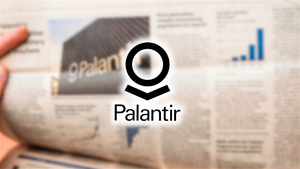
As the calendar approaches January 2026, the technology world is buzzing with anticipation for the broad availability of Intel's (NASDAQ: INTC) next-generation laptop processors, codenamed Panther Lake. These Core Ultra series 3 mobile processors are poised to be Intel's first AI PC platform built on its groundbreaking 18A production process, marking a pivotal moment in the company's ambitious strategy to reclaim semiconductor manufacturing leadership and redefine the landscape of personal computing. Panther Lake represents more than just an incremental upgrade; it is a comprehensive architectural and manufacturing overhaul designed to deliver unprecedented performance, power efficiency, and, crucially, next-level on-device AI capabilities, setting a new standard for what a PC can achieve.
The immediate significance of Panther Lake cannot be overstated. It signals Intel's aggressive push into the burgeoning "AI PC" era, where artificial intelligence is deeply integrated into the operating system and applications, enabling more intuitive, efficient, and powerful user experiences. By leveraging the advanced 18A process, Intel aims to not only meet but exceed the demanding performance and efficiency requirements for future computing, particularly for Microsoft's Copilot+ PC initiative, which mandates a minimum of 40 TOPS (trillions of operations per second) for on-device AI processing. This launch is a critical test for Intel's manufacturing prowess and its ability to innovate at the leading edge, with the potential to reshape market dynamics and accelerate the adoption of AI-centric computing across consumer and commercial sectors.
Technical Prowess: Unpacking Panther Lake's Architecture and the 18A Process
Panther Lake is built on a scalable, multi-chiplet (or "system of chips") architecture, utilizing Intel's advanced Foveros-S packaging technology. This modular approach provides immense flexibility, allowing Intel to tailor solutions across various form factors, segments, and price points. At its heart, Panther Lake features new Cougar Cove Performance-cores (P-cores) and Darkmont Efficiency-cores (E-cores), promising significant performance leaps. Intel projects more than 50% faster CPU performance compared to the previous generation, with single-threaded performance expected to be over 10% faster and multi-threaded performance potentially exceeding 50% faster than Lunar Lake and Arrow Lake, all while aiming for Lunar Lake-level power efficiency.
The integrated GPU is another area of substantial advancement, leveraging the new Xe3 'Celestial' graphics architecture. This new graphics engine is expected to deliver over 50% faster graphics performance compared to the prior generation, with configurations featuring up to 12 Xe cores. The Xe3 architecture will also support Intel's XeSS 3 AI super-scaling and multi-frame generation technology, which intelligently uses AI to generate additional frames for smoother, more immersive gameplay. For AI acceleration, Panther Lake boasts a balanced XPU design, combining CPU, GPU, and NPU to achieve up to 180 Platform TOPS. While the dedicated Neural Processing Unit (NPU) sees a modest increase to 50 TOPS from 48 TOPS in Lunar Lake, Intel is strategically leveraging its powerful Xe3 graphics architecture to deliver a substantial 120 TOPS specifically for AI tasks, ensuring a robust platform for on-device AI workloads.
Underpinning Panther Lake's ambitious performance targets is the revolutionary 18A production process, Intel's 2-nanometer class node (1.8 angstrom). This process is a cornerstone of Intel's "five nodes in four years" roadmap, designed to reclaim process leadership. Key innovations within 18A include RibbonFET, Intel's implementation of Gate-All-Around (GAA) transistors – the company's first new transistor architecture in over a decade. RibbonFET offers superior current control, leading to improved performance per watt and greater scaling. Complementing this is PowerVia, Intel's industry-first backside power delivery network. PowerVia routes power directly to transistors from the back of the wafer, reducing power loss by 30% and allowing for 10% higher density on the front side. These advancements collectively promise up to 15% better performance per watt and 30% improved chip density compared to Intel 3, and even more significant gains over Intel 20A. This radical departure from traditional FinFET transistors and front-side power delivery networks represents a fundamental shift in chip design and manufacturing, setting Panther Lake apart from previous Intel generations and many existing competitor technologies.
Reshaping the Competitive Landscape: Implications for Tech Giants and Startups
The advent of Intel's (NASDAQ: INTC) Panther Lake architecture and its 18A production process carries profound implications for the entire technology ecosystem, from established tech giants to nimble startups. Primarily, Intel itself stands to be the biggest beneficiary, as the successful rollout and high-volume production of Panther Lake on 18A are critical for reasserting its dominance in both client and server markets. This move is a direct challenge to its primary rival, Advanced Micro Devices (AMD) (NASDAQ: AMD), particularly in the high-performance laptop and emerging AI PC segments. Intel's aggressive performance claims suggest a formidable competitive offering that will put significant pressure on AMD's Ryzen and Ryzen AI processor lines, forcing a renewed focus on innovation and market strategy from its competitor.
Beyond the x86 rivalry, Panther Lake also enters a market increasingly contested by ARM-based solutions. Qualcomm (NASDAQ: QCOM), with its Snapdragon X Elite processors, has made significant inroads into the Windows PC market, promising exceptional power efficiency and AI capabilities. Intel's Panther Lake, with its robust NPU and powerful Xe3 graphics for AI, offers a direct and powerful x86 counter-punch, ensuring that the competition for "AI PC" leadership will be fierce. Furthermore, the success of the 18A process could position Intel to compete more effectively with Taiwan Semiconductor Manufacturing Company (TSMC) in the advanced node foundry business. While Intel may still rely on external foundries for certain chiplets, the ability to manufacture its most critical compute tiles on its own leading-edge process strengthens its strategic independence and potentially opens doors for offering foundry services to other companies, disrupting TSMC's near-monopoly in advanced process technology.
For PC original equipment manufacturers (OEMs), Panther Lake offers a compelling platform for developing a new generation of high-performance, AI-enabled laptops. This could lead to a wave of innovation in product design and features, benefiting consumers. Startups and software developers focused on AI applications also stand to gain, as the widespread availability of powerful on-device AI acceleration in Panther Lake processors will create a larger market for their solutions, fostering innovation in areas like real-time language processing, advanced image and video editing, and intelligent productivity tools. The strategic advantages for Intel are clear: regaining process leadership, strengthening its product portfolio, and leveraging AI to differentiate its offerings in a highly competitive market.
Wider Significance: A New Dawn for AI-Driven Computing
Intel's Panther Lake architecture and the 18A process represent more than just a technological upgrade; they signify a crucial inflection point in the broader AI and computing landscape. This development strongly reinforces the industry trend towards ubiquitous on-device AI, shifting a significant portion of AI processing from centralized cloud servers to the edge – directly onto personal computing devices. This paradigm shift promises enhanced user privacy, reduced latency, and the ability to perform complex AI tasks even without an internet connection, fundamentally changing how users interact with their devices and applications.
The impacts of this shift are far-reaching. Users can expect more intelligent and responsive applications, from AI-powered productivity tools that summarize documents and generate content, to advanced gaming experiences enhanced by AI super-scaling and frame generation, and more sophisticated creative software. The improved power efficiency delivered by the 18A process will translate into longer battery life for laptops, a perennial demand from consumers. Furthermore, the manufacturing of 18A in the United States, particularly from Intel's Fab 52 in Arizona, is a significant milestone for strengthening domestic technology leadership and building a more resilient global semiconductor supply chain, aligning with broader geopolitical initiatives to reduce reliance on single regions for advanced chip production.
While the benefits are substantial, potential concerns include the initial cost of these advanced AI PCs, which might be higher than traditional laptops, and the challenge of ensuring robust software optimization across the diverse XPU architecture to fully leverage its capabilities. The market could also see fragmentation as different vendors push their own AI acceleration approaches. Nonetheless, Panther Lake stands as a milestone akin to the introduction of multi-core processors or the integration of powerful graphics directly onto CPUs. However, its primary driver is the profound integration of AI, marking a new computing paradigm where AI is not just an add-on but a foundational element, setting the stage for future advancements in human-computer interaction and intelligent automation.
The Road Ahead: Future Developments and Expert Predictions
The introduction of Intel's Panther Lake is not an endpoint but a significant launchpad for future innovations. In the near term, the industry will closely watch the broad availability of Core Ultra series 3 processors in early 2026, followed by extensive OEM adoption and the release of a new wave of AI-optimized software and applications designed to harness Panther Lake's unique XPU capabilities. Real-world performance benchmarks will be crucial in validating Intel's ambitious claims and shaping consumer perception.
Looking further ahead, the 18A process is slated to be a foundational technology for at least three upcoming generations of Intel's client and server products. This includes the next-generation server processor, Intel Xeon 6+ (codenamed Clearwater Forest), which is expected in the first half of 2026, extending the benefits of 18A's performance and efficiency to data centers. Intel is also actively developing its 14A successor node, aiming for risk production in 2027, demonstrating a relentless pursuit of manufacturing leadership. Beyond PCs and servers, the architecture's focus on AI integration, particularly leveraging the GPU for AI tasks, signals a trend toward more powerful and versatile on-device AI capabilities across a wider range of computing devices, extending to edge applications like robotics. Intel has already showcased a new Robotics AI software suite and reference board to enable rapid innovation in robotics using Panther Lake.
However, challenges remain. Scaling the 18A process to high-volume production efficiently and cost-effectively will be critical. Ensuring comprehensive software ecosystem support and developer engagement for the new XPU architecture is paramount to unlock its full potential. Competitive pressure from both ARM-based solutions and other x86 competitors will continue to drive innovation. Experts predict a continued "arms race" in AI PC performance, with further specialization of chip architectures and an increasing importance of hybrid processing (CPU+GPU+NPU) for handling diverse and complex AI workloads. The future of personal computing, as envisioned by Panther Lake, is one where intelligence is woven into the very fabric of the device.
A New Chapter in Computing: The Long-Term Impact of Panther Lake
In summary, Intel's Panther Lake architecture, powered by the cutting-edge 18A production process, represents an aggressive and strategic maneuver by Intel (NASDAQ: INTC) to redefine its leadership in performance, power efficiency, and particularly, AI-driven computing. Key takeaways include its multi-chiplet design with new P-cores and E-cores, the powerful Xe3 'Celestial' graphics, and a balanced XPU architecture delivering up to 180 Platform TOPS for AI. The 18A process, with its RibbonFET GAA transistors and PowerVia backside power delivery, marks a significant manufacturing breakthrough, promising substantial gains over previous nodes.
This development holds immense significance in the history of computing and AI. It marks a pivotal moment in the shift towards ubiquitous on-device AI, moving beyond the traditional cloud-centric model to embed intelligence directly into personal devices. This evolution is poised to fundamentally alter user experiences, making PCs more proactive, intuitive, and capable of handling complex AI tasks locally. The long-term impact could solidify Intel's position as a leader in both advanced chip manufacturing and the burgeoning AI-driven computing paradigm for the next decade.
As we move into 2026, the industry will be watching several key indicators. The real-world performance benchmarks of Panther Lake processors will be crucial in validating Intel's claims and influencing market adoption. The pricing strategies employed by Intel and its OEM partners, as well as the competitive responses from rivals like AMD (NASDAQ: AMD) and Qualcomm (NASDAQ: QCOM), will shape the market dynamics of the AI PC segment. Furthermore, the progress of Intel Foundry Services in attracting external customers for its 18A process will be a significant indicator of its long-term manufacturing prowess. Panther Lake is not just a new chip; it is a declaration of Intel's intent to lead the next era of personal computing, one where AI is at the very core.
This content is intended for informational purposes only and represents analysis of current AI developments.
TokenRing AI delivers enterprise-grade solutions for multi-agent AI workflow orchestration, AI-powered development tools, and seamless remote collaboration platforms.
For more information, visit https://www.tokenring.ai/.





